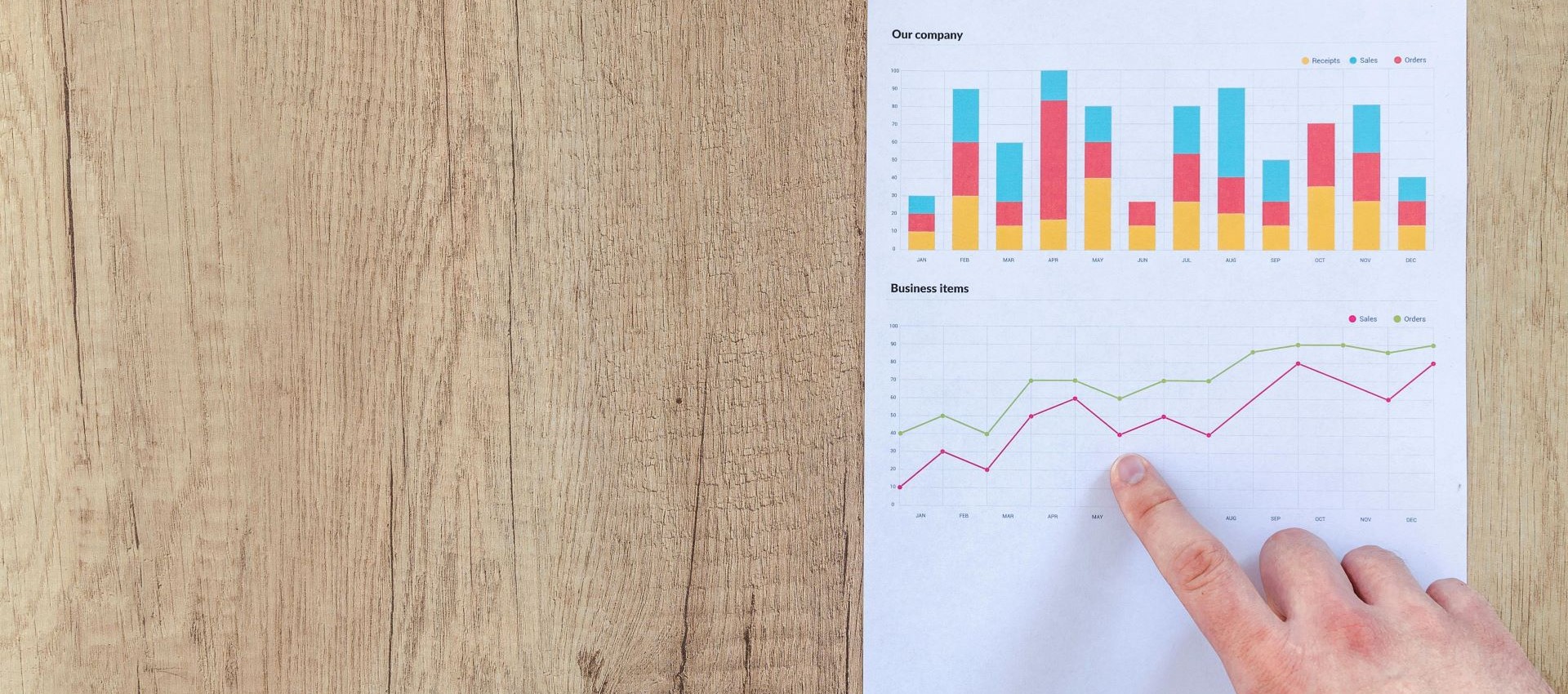Home
Feature Adoption Rate: Benchmark, Definition & Formula
Discover what a good feature adoption rate is, how to measure it, and benchmarks to target. Learn the formula and see examples from top companies.
CHRISTIAN CASSISI – 11/12/2024

Checking the User Adoption Rate Benchmark / Pexels.com / Lukas
What is the Feature Adoption Rate|
Why is the Feature Adoption Rate Important?|
How to calculate the Feature Adoption Rate (Formula)|
What is a Good Feature Adoption rate Benchmark|
Factors Affecting the Feature Adoption Rate|
Real-Life Examples of Feature Adoption Rate Benchmarks|
Tips for Improving the Feature Adoption Rate|
The Feature Adoption Rate as a Success Indicator |
When companies introduce new features or products, a common question arises: “How well are users adopting this new feature?” The answer lies in understanding the “feature adoption rate.” In this article, we’ll explore what exactly the feature adoption rate is, how to calculate it, what benchmarks to aim for, and real-life examples from well-known companies.
What is the Feature Adoption Rate?
The feature adoption rate indicates the percentage of users who actively use a new feature within a certain period. The goal is to gauge how quickly and broadly users adopt new features, which can help increase a product’s value and improve user retention.
Why is the Feature Adoption Rate Important?
A high feature adoption rate suggests that users find the new feature valuable and are incorporating it into their regular use. This is a positive indicator for product development and can be a critical measure of a feature’s success. On the other hand, a low adoption rate might indicate that a feature is either poorly designed, hard to find, or not valuable to users.
Example: When WhatsApp introduced its “Status” feature (similar to Instagram Stories), many users initially ignored it. However, after optimizing the feature and promoting it effectively, WhatsApp saw an increase in adoption, and now millions use it daily.
How to Calculate the Feature Adoption Rate (Formula)
To calculate the feature adoption rate, you can use this simple formula:
Feature Adoption Rate = (Number of active users of the new feature / Total number of users) × 100
This formula provides the percentage of users who have adopted the new feature within a specific time frame, giving a clear picture of how widely the feature is being used.
Example Calculation: Imagine a software platform introduces a new collaboration tool. Of the platform’s 10,000 users, 2,500 actively use this feature within the first month. The calculation would be:
(2,500 / 10,000) × 100 = 25%
In this case, the feature adoption rate is 25%.
Here your little extra. If you want to know more key metrics next to “User Adoption Rate” you should watch this video at 04:20, where they explain some key KPIs you should track. We even have a dedicated post for KPIs.
What is a Good Feature Adoption Rate Benchmark?
There is no single “ideal” feature adoption rate benchmark, as this varies depending on the industry, feature type, and user base. However, some general benchmarks can provide guidance:
1. Common Benchmark: An adoption rate of around 20-30% is generally considered good. This means 20-30% of the total user base actively uses the new feature.
2. Successful Feature Updates: For highly popular or well-integrated features, adoption rates of over 50% can be achieved. This is often seen when features are well-promoted and highly relevant to users.
3. Specific Industry Examples: In the tech industry, average adoption rates for new product features tend to hover around 25% according to an analysis by Intercom, a provider of customer messaging solutions.
You like it so far?
SIGN UP TO OUR NEWSLETTER TO GET MORE BENCHMARKS TO MEASURE YOUR SUCCESS
Factors Affecting the Feature Adoption Rate
Several factors influence how well a feature is adopted by users:
- Ease of Use: Is the new feature easy to find and use?
- Clear Value: Do users understand the benefits of the feature?
- Marketing & Communication: Is the feature well-explained and promoted?
- Onboarding Process: Are there tutorials or prompts that guide users in using the feature?
Real-Life Examples of Feature Adoption Rate Benchmarks from Well-Known Companies
Let’s look at a few examples of how leading companies measure and achieve high feature adoption rates:
-
Slack introduced a feature allowing users to send short audio and video clips within their teams. Initially, the adoption rate was low, but after highlighting the feature’s usefulness for remote teams, Slack achieved an adoption rate of over 30% for this feature. This example shows how targeted promotion can improve adoption.
-
Dropbox launched a new feature called “Dropbox Paper,” a collaborative workspace designed for document creation and team collaboration. In its first six months, Dropbox Paper reached an adoption rate of 20% of its active user base. Although this fell within a healthy benchmark, Dropbox decided to optimize the feature further, boosting adoption through additional integrations and UX improvements.
-
Spotify rolled out its “Blend” feature, which allows friends to combine their music tastes into a shared playlist. Within a few months of its release, Blend achieved an adoption rate of around 30% among Spotify’s premium users, largely due to its prominent in-app promotion and relevance for music discovery and social sharing.
-
Microsoft Teams introduced a new “Together Mode,” which places meeting participants in a shared virtual background to enhance the feeling of togetherness. Within the first three months, Microsoft reported that 25% of its active Teams users had adopted the feature. This high rate was driven by the relevance of Together Mode for remote work, particularly during the pandemic, where users were looking for ways to improve virtual meeting experiences.
Tips for Improving the Feature Adoption Rate
If your feature adoption rate is lower than expected, there are a few strategies you can use to increase it:
1. Clear Communication and Tutorial Videos
Make sure users immediately understand how the new feature works and what value it brings. A short tutorial video right after launching the feature can be very effective.
2. Gather User Feedback
Survey users who aren’t using the feature to understand the barriers. Is the feature hard to find? Do users not see its value? This feedback can be invaluable for making targeted improvements. Also include the user feedback into your customer persona to improve your understanding about your customers.
3. Make the Feature Accessible
Ensure the feature is easy to discover and activate. This might involve placing a prominent button or providing a brief introduction when users log in.
4. Use Targeted Marketing
Highlight the new feature in newsletters, app notifications, or social media to draw attention to it and encourage adoption.
The Feature Adoption Rate Benchmark as a Success Indicator
The feature adoption rate is a valuable metric to assess the success of new features and updates. It not only shows how well a feature is being received but also provides insights into how the overall user experience can be enhanced.
In Summary:
- A good feature adoption rate typically falls between 20-30%.
- A high adoption rate signals that a feature is valuable and user-friendly.
- Companies should analyze feature adoption rates closely to make informed decisions on optimizing or potentially removing features.
By taking a thoughtful approach to feature adoption, companies can improve not only their feature adoption rate but also overall user satisfaction and engagement with their products.
Newsletter
GET MORE INSIGHTS TO SUCCESSFULL IMPROVE YOUR SOFTWARE
Stay Ahead Of Others With Our Newest Articles
What is Agile Product Lifecycle Management
Master essential Product Management KPIs to boost growth, user satisfaction, and team efficiency with data-driven insights and strategies.
Product Manager Explained
Master essential Product Management KPIs to boost growth, user satisfaction, and team efficiency with data-driven insights and strategies.
Master working with Product Management KPIs
Master essential Product Management KPIs to boost growth, user satisfaction, and team efficiency with data-driven insights and strategies.
How to Use Personas
Learn how to turn your customer personas into actionable insights that improve your product development and marketing strategies.
Create and Design the Perfect Customer Persona
Learn how to create data-driven user personas that turn guesswork into smart product decisions to drive your product’s success.
Everything You Need to Know About Product Management for Beginners
Unlock the secrets of successful product management and learn how to turn ideas into winning products.






